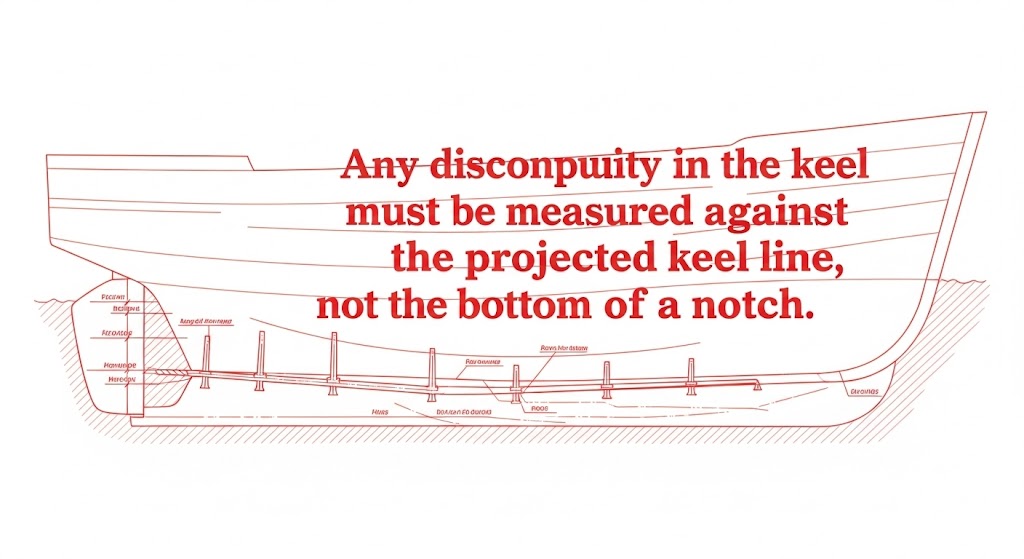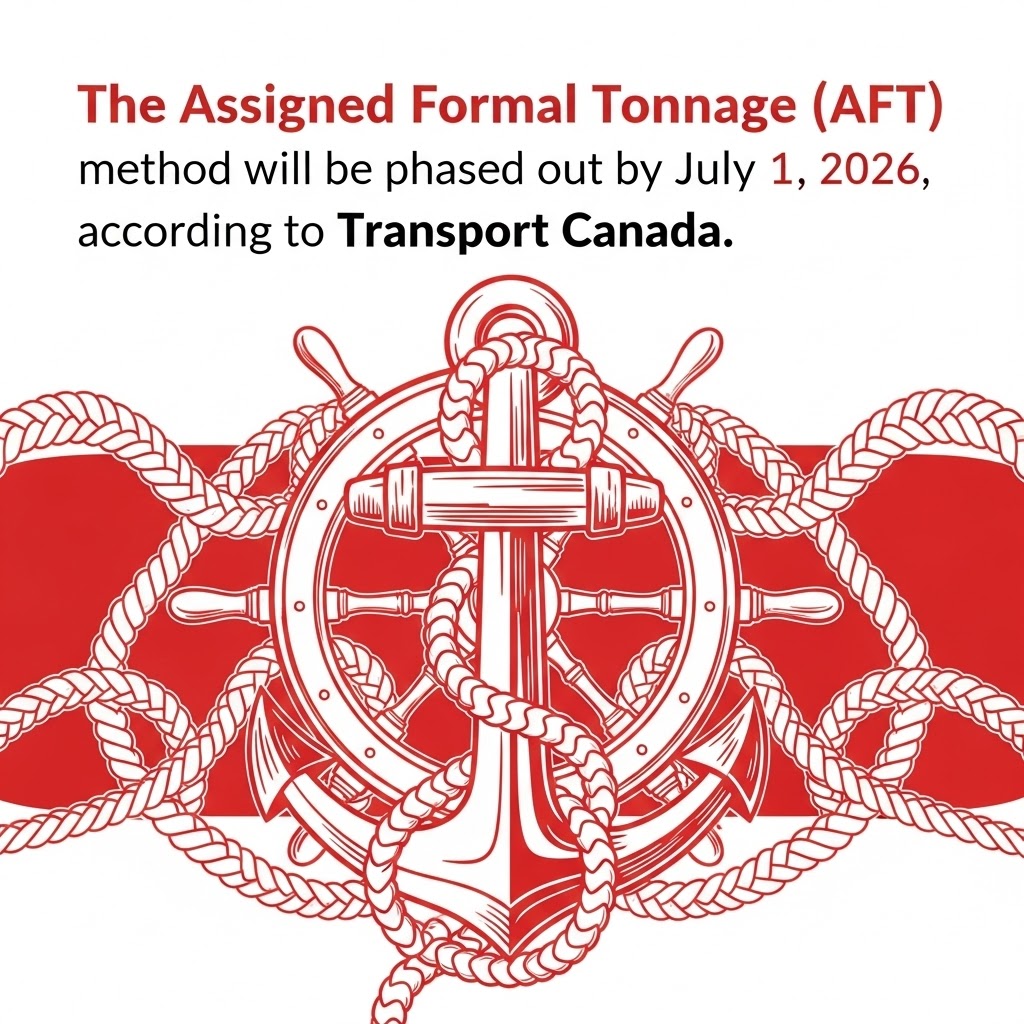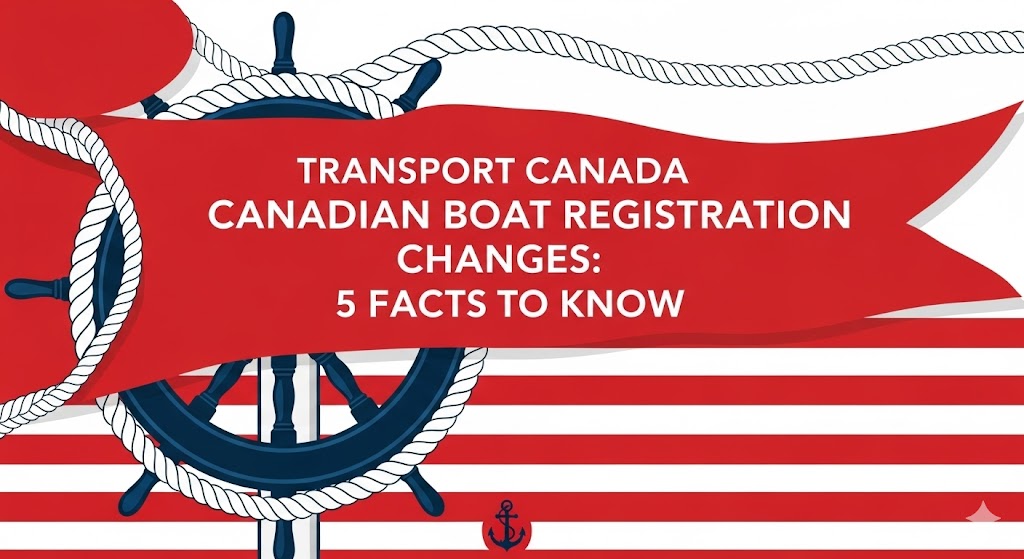If you own a small Canadian boat — or are thinking about registering one — you’ll want to pay close attention to recent changes announced by Transport Canada in Ship Safety Bulletin No. 17/2025. These updates affect how tonnage is measured for boats under 24 metres, and can have big implications for Canadian boat registration, safety, and compliance.

What’s Changing Under Transport Canada’s New Bulletin
One of the biggest shifts comes from clarifying how tonnage measurement depth (TMD) should be measured when there is a notch or discontinuity in the keel. According to Transport Canada’s bulletin, if your boat has a notch at the middle of its length (the Tonnage Measurement Length, or TML), you should not measure to the bottom of that notch. Instead, you must measure to an imaginary projected line that continues the keel’s lowest line.
Why does this matter? Some boat owners may have tried to reduce their tonnage — and thus potentially some fees or regulatory burden — by building in notches. Transport Canada’s clarifications close that loophole.
Five Facts Every Canadian Boat Owner Should Know
More Accurate & Fair Tonnage Calculations
- Transport Canada is cracking down on attempts to minimize tonnage by tweaking keel shape.
- Under the clarified rules, any discontinuity in the keel must be measured against the continuous, projected keel line, not the bottom of a notch.
- This helps ensure that gross tonnage (GT) — calculated using TML, beam, and TMD — more accurately reflects the real size and shape of your boat.
Impact on Canadian Boat Registration
- When you register your boat in the Canadian Register of Vessels or the small boat register, the tonnage declared must follow the updated TMD rules.
- Misreporting or under-measuring could lead to inaccurate official records, which can affect insurance, regulatory classification, and more.
Modifications Could Trigger Re-Measurement
- If you’re planning to modify your boat — especially the keel — you should consult an appointed tonnage measurer or reach out to Transport Canada.
- These modifications might change how your TMD is calculated under the new standard. This could affect your tonnage.
- That, in turn, may require updating your Canadian boat registration to reflect the new measurements.

Transition Away from Certain Methods Coming Soon
- According to Transport Canada, The Assigned Formal Tonnage (AFT) method will be phased out by July 1, 2026,
- AFT is sometimes used for small boats (less than 12 m). Transport Canada says AFT does not always accurately reflect true vessel size
- After that date, registrations must rely on more precise methods — either the simplified method (which follows Part 3 of TP 13430) or measurements by an official tonnage measurer.
Compliance Is Crucial for Boat Licensing
- These measurement rules tie directly into how Transport Canada assesses and classifies your boat. That classification can influence whether you need a pleasure craft licence, or where your boat sits in regulatory systems like the small boat register.
- Staying compliant with Transport Canada’s updated tonnage measurement practices ensures that your registration remains valid and defensible in case of audits or inspections.
- For a registration of a government boat, such as a municipal or provincial patrol or research craft, accurate tonnage is also important — not just for safety but for how your craft is formally recorded.
What You Should Do to Stay Compliant
Here’s what we recommend:
- Review your boat’s current recorded measurements — especially if you have any notches or nonstandard keel shapes.
- If you’re planning any modification, particularly to the hull or keel, consult with a Transport Canada–appointed tonnage measurer.
- Submit updated measurements as part of your registration or renewal process so that your Canadian boat registration remains correct.
- Keep up to date with TP 13430. This standard governs tonnage measurement. Follow that and you’ll be using the correct formulas and methods.
- Use our service at the National Vessel Registry Center Corp. to access the right forms for registration, small vessel registration, or pleasure craft licence applications. We make it easier to submit your tonnage data properly.
How We Help You Navigate These Changes
At the National Vessel Registry Center Corp., our role is to simplify your path through regulatory and administrative work for boat registration. Here’s how we support you in light of the new Transport Canada bulletin:
- We provide all the forms you need to apply for or update your Canadian boat registration, or to maintain your small boat register status.
- While we don’t perform the measurements ourselves, we help you understand what Transport Canada expects and how to document it when applying.
- We help you stay informed on any further regulatory bulletins or changes from Transport Canada that may affect your registration or licencing.
Why These Changes May Matter for You
- Getting your tonnage measurement right helps avoid underreporting and potential regulatory issues.
- Accurate tonnage affects your classification, which in turn impacts the need for inspections, licences, and compliance obligations.
- Regularizing your registration data ensures you remain in good standing under Canadian maritime laws. So, these include the Canada Shipping Act, 2001, and Vessel Registration and Tonnage Regulations.
If you have questions about your Canadian boat registration or pleasure craft licence, we’d be happy to help you figure out exactly what Transport Canada forms to fill out or how to move forward.

